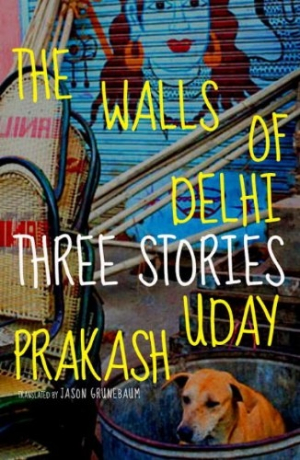The Walls of Delhi
Three Stories
Short stories highlight the paradoxical energy and powerlessness of India’s city streets and socio-political culture.
The richly descriptive narrative of Uday Prakash’s The Walls of Delhi, with its casual storytelling style, immediately draws the reader into the setting of India’s busy streets and its residents to convey a land teeming with spirit and enterprise, as well as the oppression of poverty and corruption.
Each of the stories reveals how different life can be for the rich and poor—even for the poor who finally enter the life of the rich. The first protagonist, Ramnivas, a poor laborer known for being a penny-pincher, discovers a hoard of money within the walls of a building he is cleaning, steals it, and becomes popular. However, as Ramnivas discovers, the life of a wealthy man comes at a price. The corruption within India and the oppression of the poor is highlighted in the second story when Mohandas, a poor man who has passed a prestigious BA test and has the opportunity to rise above his station in life, is ruined when his identity is stolen. In the third story, twenty-year-old Shobha is sexually abused by city officials while her husband stands by, engaging in the men’s disgusting delights while also reaping financial benefit. The building contractor’s driver, Chandrakant, rescues Shobha, and they run away together and fall in love.
The themes of wealth (literal and metaphorical) are compared and contrasted with the brutal and ugly images associated with the powerful. For example, the descriptions of Shobha being raped are violent and graphic. The imagery of the crude physical sex acts contrasts the lush and tender descriptions of Shohba’s maternal love and the love between Shobha and Chandrakant and their “game of fanning the flames atop their magic carpet.”
The narrative is hypnotic, not only in its ability to reveal socio-political situations and extreme poverty, but in the way the narrative interweaves the stories with legends and then offers candid statements referencing world events that make the truth of the message of poverty and corruption very real.
There are a couple of instances when images or descriptions are repeated, such as when Shobha is assaulted with a bottle, but this is a minor complaint given the overall bounty of the narrative with its images and revelations about the underbelly of India’s corruption and poverty. The Walls of Delhi is an illuminating social commentary.
Reviewed by
Maya Fleischmann
Disclosure: This article is not an endorsement, but a review. The publisher of this book provided free copies of the book to have their book reviewed by a professional reviewer. No fee was paid by the publisher for this review. Foreword Reviews only recommends books that we love. Foreword Magazine, Inc. is disclosing this in accordance with the Federal Trade Commission’s 16 CFR, Part 255.

